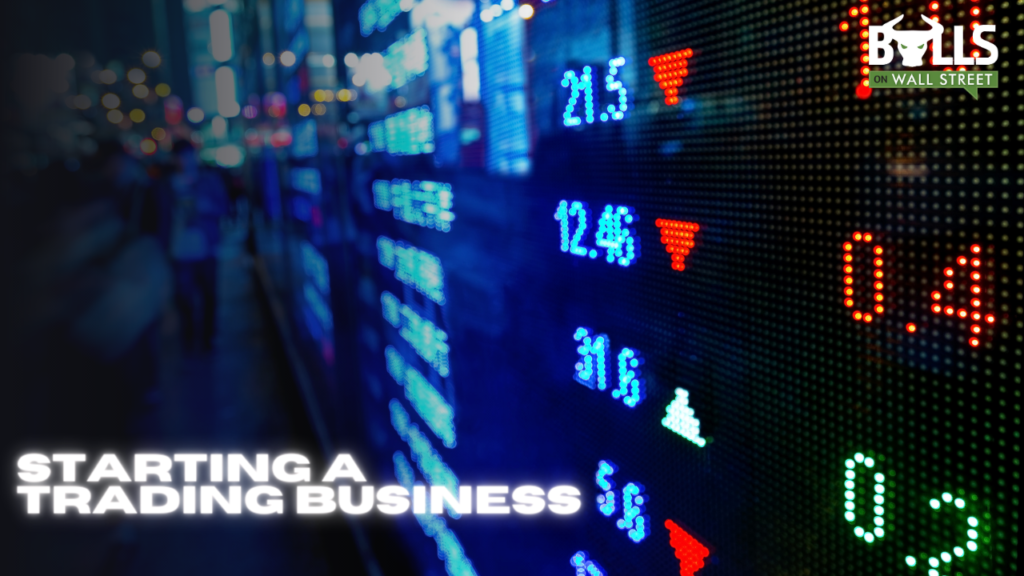Learning to trade stocks is no different than learning any other profession. You must develop the same level of skill and expertise as a doctor or lawyer, and apply a high degree of commitment and attention to detail for every aspect of the job. Starting a trading business is a similar process to launching any business.
If you want to trade on your own, with your own money, then you need to look at your trading business like any other business. So many traders come in looking at trading as a hobby or a side project, rather than looking at it as if they are the CEO of their own business.
Side projects & hobbies cost you money; the sole goal of trading as a business is TO MAKE MONEY! So many of the unsuccessful traders I have met over the years have treated their trading like a hobby.
It’s fun for them and gives them a rush of excitement so they keep doing it, but that’s not what leads to consistent profits. Here’s what you need to do to start your trading business.
1. Get Educated.
Just like in any other profession, you have to understand every piece of the job down to the microscopic details. Think about everything a doctor learns and goes through before their first surgery. Just because you watched a few videos and read some books doesn’t make you a trader.
Having a specific method that you know from A to Z and have practiced over and over is necessary before a dollar is ever risked. That’s why in our trading courses where I teach my students every single thing I know about trading, we put our students on trading simulators where they go out and practice what they learned. Our students only go live and trade with real money once they have shown that they can go out and make money every single day.
2. Build a Trading Business Plan.
Would you go into a bank and ask for a loan to start a restaurant with no business plan? Probably not! Your trading needs to be the same way. Before they start the simulator, my Bootcamp students all complete a business plan. I want them to really take what they learned in Bootcamp and start to think about how it applies to them.
What style of trading will you do? Day or swing?
What is your system for risk management?
What tools/software will you utilize?
What setups will you focus on?
Putting together a comprehensive plan will give you areas to focus on when you’re trading on the simulator, as simulating without focus is not real practice. When you practice, it needs to be deliberate and mimic real life conditions.
3. Test it Out!
After your have learned and focused your education on a specific business plan, you need to go test it all out. Either hop on a real time trading simulator like TC2000, ToS, etc., or put a small amount of capital to work! As you know, what looks good on paper often doesn’t make sense in real life conditions, so take meticulous notes on what needs to change in your business plan as you are simulating your strategy.
It will answer some questions for you: does your strategy mix well with your work schedule? Does it make money? Does it suit your personality, etc. What it will also do– this is important– is keep a log of your trades to give you an idea of your tendencies. What are your strengths and weaknesses? What are your best setups?
To be a consistently profitable trader, you will need a toolbox of go-to setups that are your own and that you can use every single day. Identifying what you’re good at and then practicing it over and over will help you build expertise in these setups. You need thousands of repetitions to really start to see all the angles as a trader and to build that expertise that starts here!
4. Structure your Trading Business.
Tax status. Will you trade in an LLC, INC? Will you pursue the trader tax status through the IRS? It is best to talk to an accountant about these things. This is a very small part of trading as you only pay taxes if you win! Making money should be your major focus, as the rest is easy if you can do that!
Brokers. Your broker will change depending on your style. If you’re day trading vs swing trading, the type of commission structure you need will vary. As a day trader, if you pay a flat rate like Ameritrade or Etrade charge, it’s nearly an impossibility to make money unless your account is 500k or more.
Day trading requires often scaling in and out of trades, so a flat fee of $9.99 will cost you hundreds of dollars a day in fees. This makes the cost of doing business so high that the probabilities of covering your fees as a new trader are small. Some brokers like Interactive Brokers charge per share vs per trade.
That means you just pay for the shares you trade, not a flat fee. 100 shares is 27 cents. 200 shares 54 cents etc. You can take hundreds of trades, but you still just pay for the shares you trade! For a swing trader, this means much less as you may only make 5-10 trades a week, so the fees make less of an impact. My swing trades and IRA’s are through Ameritrade .
Tools. Often traders need a supplement to the tools their brokers offer. Additional charting or scanning capabilities are needed in some cases. Also, once you have the Go-to setups that you are going to be trading, being able to find them is key! Developing scans to find and alert yourself to opportunities is very important!
I use Trade-Ideas and TC2000 for my scanning and charting. Now when I’m trading intraday, I do very little scanning as the homework I do at night gives me more than enough ideas, my goal is to now just execute my plan vs sit there sifting through data during the day, which just throws my focus off.
5. GO TRADE!
All it will take is everything you got! Your passion and energy for this will help determine your success. Trading is a lifelong pursuit, so focus on the process each day and learn how to eliminate mistakes and accentuate your strengths. This means keeping a journal of your trades, but also your emotions, so you can see where the screw ups happen and pinpoint them.
PROCESS PROCESS PROCESS. Don’t focus on results or dollars – if you do, it will end you. Think about all the things you need to do leading up to that! It’s the little things that lead to a great day! And keep hammering at it! Reducing and finding ways to minimize slumps are key, as 1 slump can end you. Remember, your number 1 job is to manage risk at all times. You’re a professional risk manager.
Learn How to Day Trade and Swing Trade Through Live Classes
Spots are filling up in our trading boot camp FAST.
Click here to apply for our next trading boot camp!




